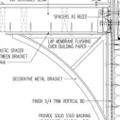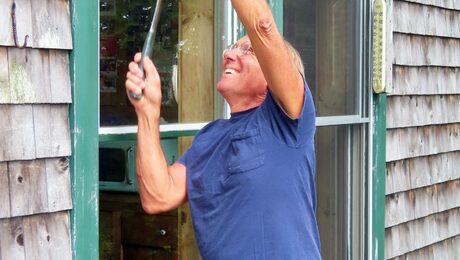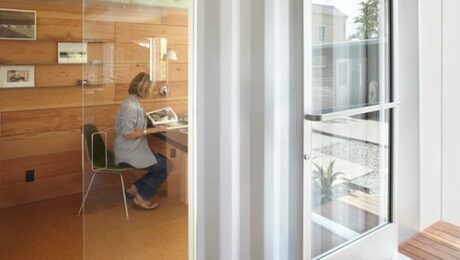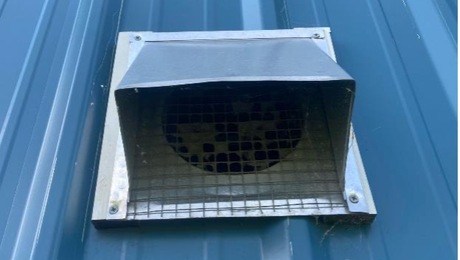Petroleum-free vapor barrier?
Hello,
I am in the process of building an off-grid home where we plan to pour 3″ adobe floors over a plywood subfloor (with radiant heating in the adobe). In order to do so, we need to lay down a vapor barrier to de-couple the adobe from any floor movement, and to protect the plywood from the moisture that will be in the adobe when it is poured. However, at this point I’m rather appalled by the amount of petroleum based products we have had to use in order to get good air sealing on the exterior envelope (not to mention the mountains of plastic packaging all our materials have come in). So, I’m wondering if there are vapor barrier products out there that are not plastic based. Alternatively, are there any manufacturers that utilize better production practices that are less harmful on the environment than the industry standards?
Any assistance would be greatly appreciated!
GBA Detail Library
A collection of one thousand construction details organized by climate and house part









Replies
mwk,
With a bit of planning you should be able to completely eliminate poly from your build. You don't say what foundation type you using, but probably the hardest place is as a moisture barrier under the basement or crawlspace slab. Gypcrete and concrete are routinely poured on plywood subfloors without poly vapour barriers. I'm not sure one is necessary under adobe, but would bet other materials would work as both a slip-sheet, and provide enough protection during drying. Unfortunately the one the comes to mind is building-felt, which is asphalt impregnated. Another alternative would be a vapour-barrier paint and rosin-paper.
Aha! You are in luck, assuming you’re in North America. Most polyethylene in this region is NOT produced from petroleum. Most polyethylene in this region is produced using natural gas as a feedstock. This has become especially true with the recent natural gas production boom.
Now let’s assume you want a polyethylene product that isn’t sourced from either oil or natural gas. There is what is known as “biopolyethylene”, which is polyethylene produced using ethanol (usually from corn or sugarcane) as a feedstock. You’d probably have to hunt around to source this material as I’m unaware of any products specifically mentioning that they are made this way.
Most plastics are interesting in that they do NOT have to made using petroleum. Petroleum is just an efficient carbon chain rich soup to use as a feedstock. There are other ways to do it, but oftentimes the tradeoff is you don’t use oil, but you use a more energy intensive manufacturing process to arrive at the same final material. Plastics are just polymer chains, basically looong strings of carbon atoms with different element groups sticking off the sides. Petroleum is basically made up of various carbon chains too, so there isn’t much processing needed (relatively) to use it as a starting point to manufacture plastics. You can start with anything that has the right atomic makeup if you want to invest the time and energy to do it.
Regarding your specific application, I really think polyethylene sheet is probably the best option. Most natural materials will break down when in areas that are constantly damp. I’d look into either biopolyethylene, or just use regular polyethylene knowing it was probably made primarily from natural gas in North America. The final product is identical in terms of atomic makeup either way, so both have identical properties.
Bill
Hi Bill ,
Thanks for the info on non-petroleum plastics! Do you know anything about the life cycle impact of the biopolyethylene? Does it biodegrade when in a land fill? Or is it easily recycled? One of the reasons I'm trying to get away from plastic in my building is because we're looking at the building materials in terms of full life cycle impact, including what happens if they whole place gets torn down at some point in the future.
Looking forward to hearing from you,
Maya
Biopolyethylene and regular polyethylene are identical in terms of the physical properties of the product.
What makes a material the way it is, and that includes physical properties, including how it will break down over time, is the arrangement of the atoms that make it up. The place those atoms were in before they were rearranged to make the final product doesn’t matter. What this means is if the atoms started out in petroleum, or natural gas, or corn growing in a cornfield, once they’ve been rearranged into polyethylene they all behave the same.
This ultimately means that both polyethylene made from petroleum or natural gas, and biopolyethylene made From corn or sugar cane, will all break down the same way in a landfill and can all be recycled the same way too. The final product are all identical in terms of their chemical makeup — the type of, and arrangement of, the atoms that make them up.
It sounds like you want to make a structure with a minimum overall environmental impact. This is a complex question, because there are many ways to look at the problem. Is “minimum environmental impact” minimum energy use over the life of the structure? Maximizing the useful life of the structure? Using materials with the lowest embodied energy? Using materials sourced from only natural materials? Which is your preference? I don’t like thinking in terms of “natural materials”, because ultimately everything came from nature, it’s just a matter of how much processing went into things. Even petroleum is a natural resource, just a gooey sticky one. Embodied energy is better than thinking in terms of embodied carbon too, but both of those two is just my way of looking at that part of the problem.
I would recommend trying to keep things in balance to try for minimum overall impact. Don’t try to make your structure last 500 years, that would require a lot of fancy materials. Don’t rule out any product just because of how it’s raw materials were sourced. Try to minimize energy usage of your structure, but be reasonable — too much insulation gets into diminishing returns, and that means you would have achieved more by allocating your own resources differently.
If this was my place, I’d put a lot more insulation than code requires, but not crazy (no R100 attics, for example). I’d use plastic materials in places they make sense, like under slabs. If materials in those locations biodegrade too quickly, you have to rebuild part of your structure — that’s a LOT of energy use that could have been avoided by using a different material.
Wood is a good basic building material. Trees used for lumber are usually farmed these days, so they’re a crop just like corn or wheat — basically a renewable resource. No one is clear cutting old growth forest to produce 2x4s. Rigid foam is great for insulation, even though it’s usually made with plastic materials. The tradeoff is that foam will save you a LOT of energy over he life of the structure.
I’m an engineer by profession, so everything I do involves trade offs. When you’re doing your design work, think about which trade offs are most important to you. Sometimes the best overall solution isn’t what you’d first expect. If you focus on only one particular property of any given material, you may miss that that material could actually help you in some other way more important than the particular negative property you focused on.
There is a lot of info on this site, and lots of people with different ways of looking at complex problems. We can all learn from and help each other. Building things is fun, and everyone has their own priorities on different projects.
Bill
" Building things is fun"
Tell that to my thumb. It had fun with Mister table-saw yesterday.
Hope you’re ok Malcolm.
A carpenter on a recent project I was on came in with some newly damaged fingers a while back. The saw stop system was the talk of the job site that day. I myself have a shiny new compact paslode framing nailer. I am always wondering if it will nail me some day...
Bill
Thanks Bill, it's nothing that won't heal.
I wish I had sprung for a Saw Stop years ago. Don't worry about the Paslode. I've put three through my fingers over the years. They come right out.
Try not to drive Paslode nails into your fingers lengthwise. I have a ball of scar tissue on the grip side of my right (primary) index finger that has reminded me of that on an hourly basis for the last ten years. And having seen the aftermath of tablesaw accidents, if I could afford it I would definitely go with a Sawstop.
Michael,
Two of the three were in the early 90s using one of those old Sencos which had a smooth safety tip that let the nose slide too easily. I'd still rather drive an air-nail through my thumb than hit it square with a 25 oz dimple-head Estwing.
Hi Bill,
Thanks for the advice. Just to clarify, I am a licensed architect specializing in sustainable design and construction, and am well aware of all the trade offs that go into designing and building a structure. The question I am trying to get answered here boils down to:
Are there any materials out there other than plastic and asphalt that can function as a vapor barrier?
My own research and investigations have not turned up anything promising, which is why I reached out to this forum.
Hopefully someone out there has dug further into this and can come up with a product with a lower environmental impact than those used in standard construction. I've already got an entire crawl space covered in plastic, and several truck loads of plastic trash taken to the dump due to the excessive packaging all our building materials come in. So, I'm hoping to avoid adding more plastic to my build or the land fill.
Looking forward to hearing more thoughts on the subject.
About the only other thing I can think of that would work would be a thin metal sheet, stainless steel or copper. My guess is that metal processing is probably more resource intensive than the manufacture of polyethylene sheet though, so I’m not sure you would accomplish your goal of reduced environment impact by switching to metal here.
Bill
Hi Bill
thank you so much for explaining this
I'm an architectural consultant for building enclosure technical design.
Ive recently started doing some research in non plastic or asphalt air vapor barriers and was recommended to look into wax-paper. I've also been looking into mycelium, which would be easy to install in cavity walls in particular.
do you happen to know what kind of wax has similar properties to that of a self-adhering air vapor barrier product? im not a chemical engineer and would appreciate any feedback.
There are sealing waxes used commercially, usually to fix adjustments in place in electronic equipment. I have never seen wax used as an air or vapor barrier, but I could see wax being used as a spray-on sealant to use on sheathing. You’d want a wax that wouldn’t get eaten by critters, and you’d need something that would last.
I’d suggest calling some chemical companies to ask about this. Dow chemical might be a good first call since they make building products and might have more familiarity with things like you’re asking about.
If you could get a spray applied wax coating you might have an interesting product idea.
Bill
Thank you Bill
Et al-
researching earlier today and found this for a brief history of air and vapor barrier products:
https://nrc-publications.canada.ca/eng/view/accepted/?id=db9bccc2-eff6-4249-8a3f-0d2224dc30db
Also I found this: http://www.airbarrier.org/wp-content/uploads/2019/09/ABAA-Technical-Note-2-Air-Barrier-Materials.pdf
mwk,
After the initial cure of the adobe, and given there will be radiant heat in the floor, why do you need anything to protect the subfloor from moisture?